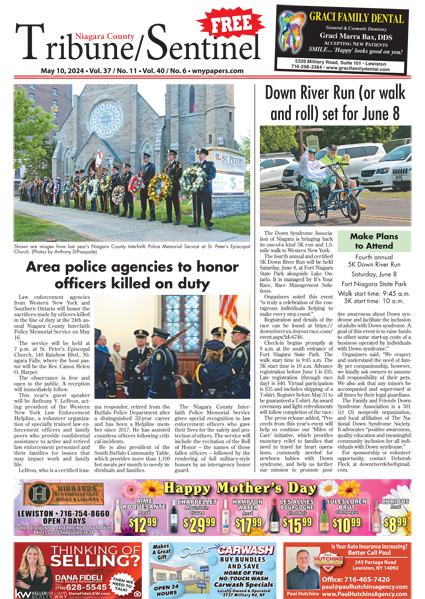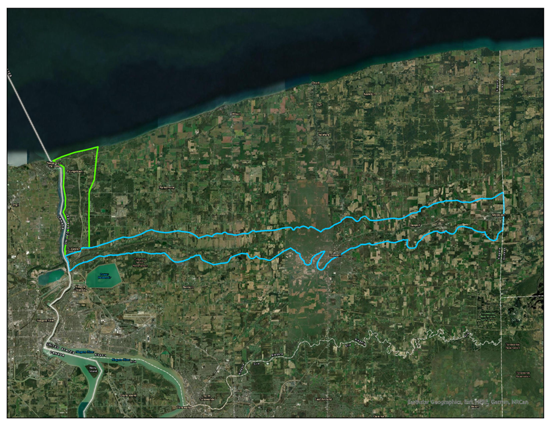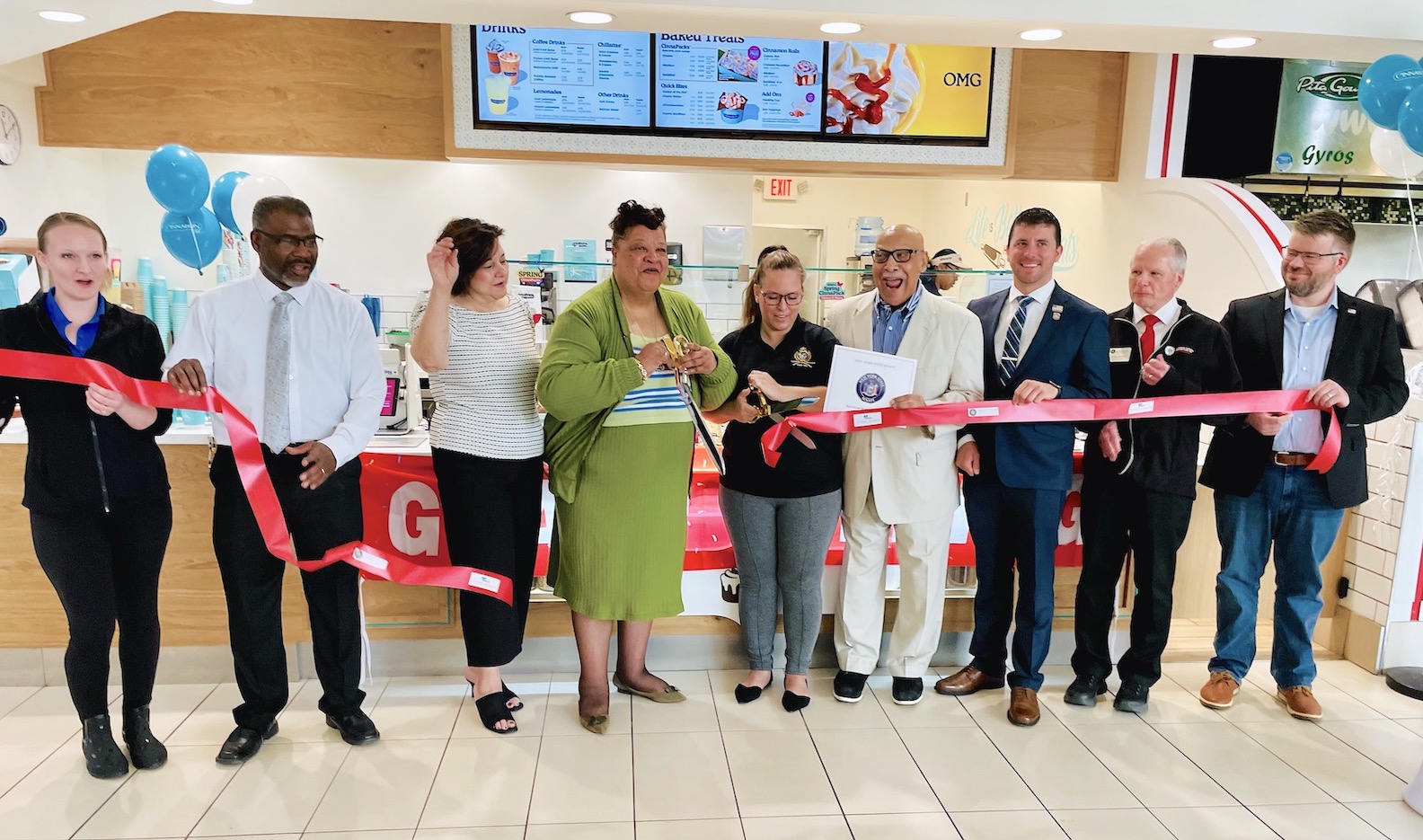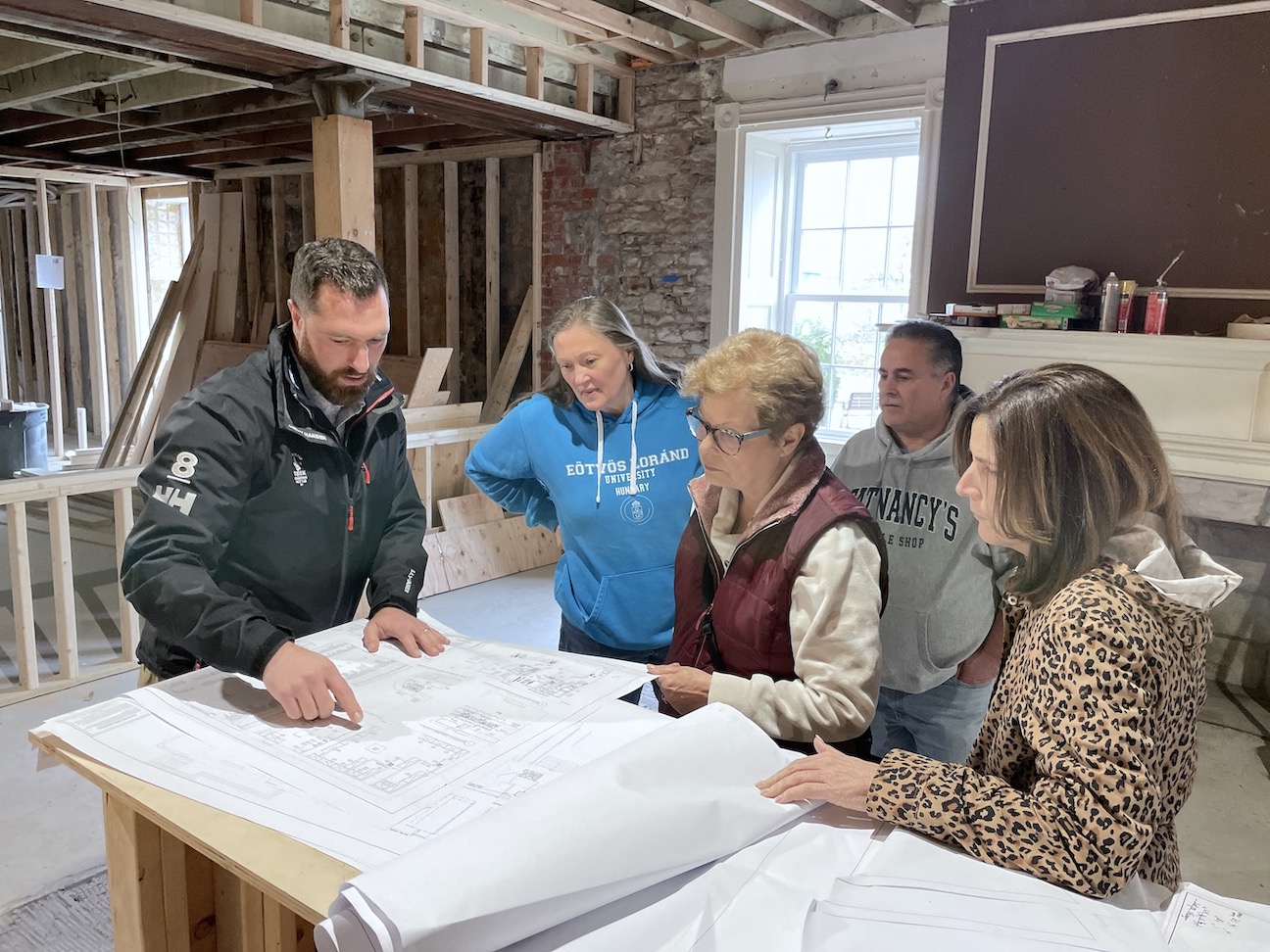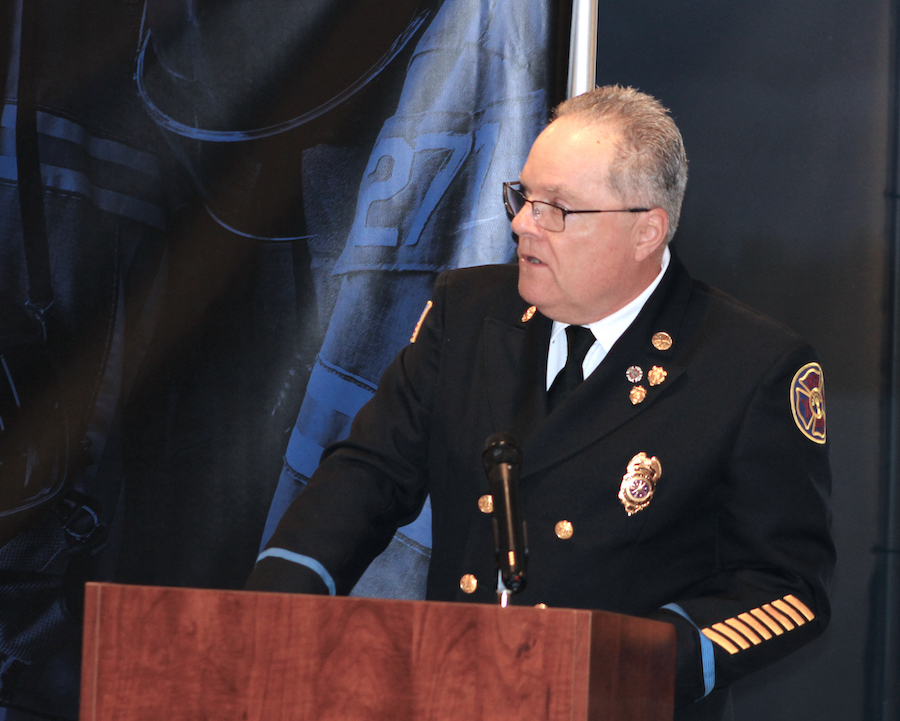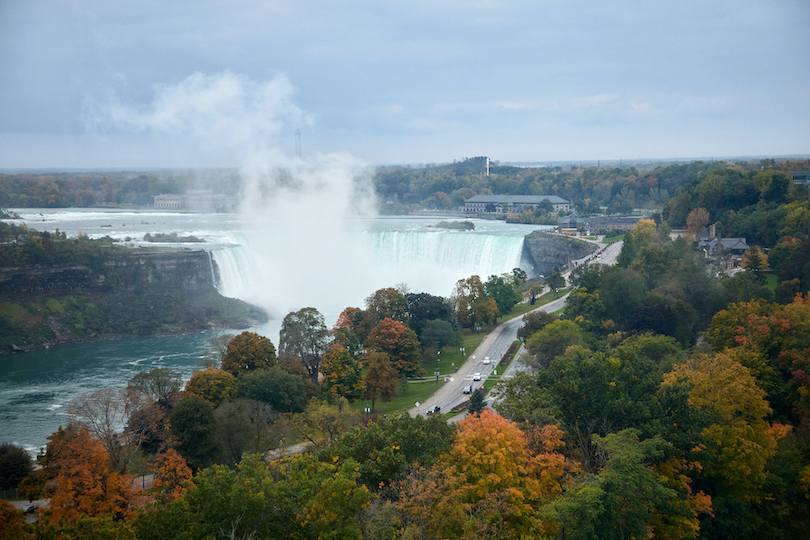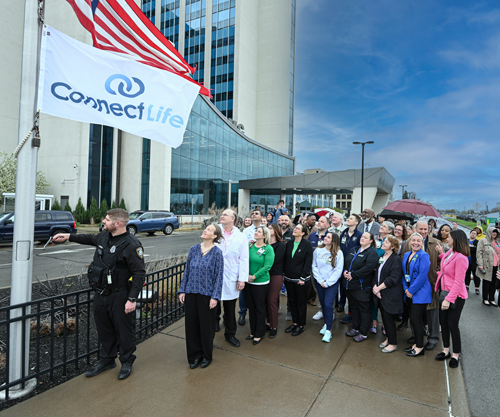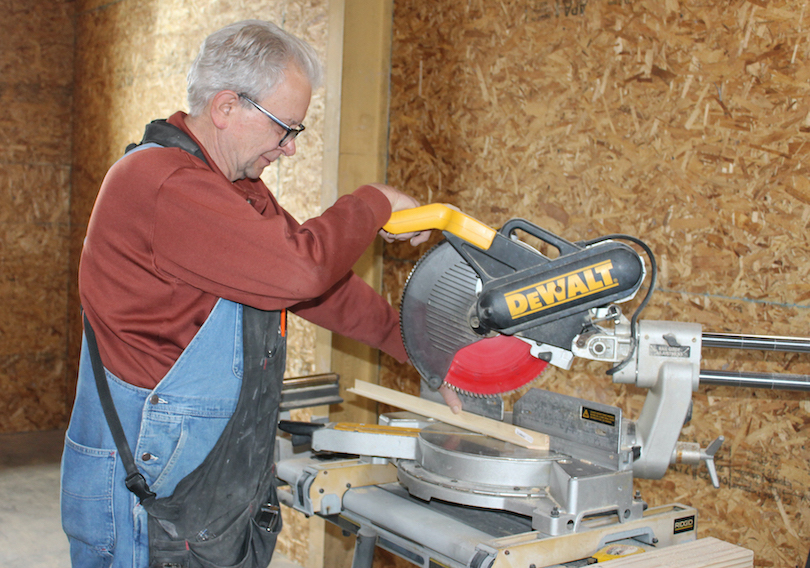Featured News - Current News - Archived News - News Categories
Former Ticor Building, oldest office building in downtown Buffalo, undergoes $5.2 million rehabilitation
Lincoln Building will house ECDOH Office of Epidemiology personnel, COVID-19 response unit
The Erie County Department of Health’s office of epidemiology is moving into new space in downtown Buffalo, finding a home in the oldest office building still existing in the downtown area – the circa-1833 Lincoln Building (formerly known as the Ticor Building).
Located at 110 Franklin St., at the corner of Franklin and West Eagle, the newly named Lincoln Building is the oldest remaining structure in the downtown Buffalo core, the lone surviving Benjamin Rathbun-designed building in the Niagara Frontier, and one of the last Greek Revival structures within the Joseph Ellicott Historic Preservation District.
Supporting funding from the U.S. CARES Act enabled $5.2 million in rehabilitation work for the building, bringing the 187-year-old edifice up to code to suit 21st-century needs. The first and second floors of the Lincoln Building will now house the ECDOH contact tracing team.
“The historic Lincoln Building is enjoying new life as the home for the office of epidemiology, which is essential to the county’s response to COVID-19. This newly rehabilitated building has hosted many presidents and notable historic figures since 1833, so it is fitting that today it becomes the epicenter in the most important public health battle of our lives,” Erie County Executive Mark Poloncarz SAID. “Contact tracers and other epidemiological team members will be stationed here along with other Department of Health personnel who are critical to the county’s pandemic response. I want to thank our Department of Public Works commissioner, William Geary Jr., for the great work his team did in restoring this remarkable space in such a short amount of time.”
On a daily basis, the ECDOH epidemiology team manages a substantial COVID-19 data and reporting operation in addition to maintaining its other services related to communicable diseases. ECDOH contact tracers conduct case investigations, placing individuals with a positive COVID-19 test result into isolation and these individuals’ close contacts into quarantine. A press release said, “This ECDOH function is crucial to breaking the chain of COVID disease transmission in our community. ECDOH has added contact tracers, call center staff and other employees.”
“From the very beginning of our COVID response, our epidemiologists have been guiding our public health work with an eye towards science, and always with a sense of empathy when fielding thousands of questions from medical providers, community leaders, businesses and the general public,” Commissioner of Health Dr. Gale Burstein said. “This team is excited to be moving into this new, dedicated space as a centralized hub for COVID operations.”
The third floor is open, allowing ECDOH the flexibility to expand COVID-19 response activities as needed. The building’s fourth floor is being built out as a training room and conference space, including a dedicated space for departmental orientations and high-quality training with appropriate physical distance.
The $5.2 million restoration of the Lincoln Building reached into all corners of the historic, 20,000-square-foot structure.
“The restoration of the Lincoln Building has been a very complicated and challenging project, but the work has been going fairly well, considering the age of the building, its historical significance and what that entails, and what needed to be done to bring it up to code to meet 2020 requirements,” Geary Jr. said. “It has taken roughly six months to get to this point. … Today, the Lincoln Building is looking better and is more functional than it has been in a long, long time.”
Included in the scope of the project were:
√ Entire roof replacement with snow protection on south side and associated asbestos abatement;
√ Gutter replacement and reinforcement;
√ Interior asbestos abatement;
√ Removal of all existing outdated and/or nonfunctional mechanical equipment;
√ Installation of a whole-Building sprinkler system from basement through fourth floor (including a new dedicated fire protection service off West Eagle Street);
√ Brand-new HVAC systems on floors one through four, these operate independently of each other;
√ Brand-new boiler to provide hot water to the entire building;
√ Brand-new furniture on first and second floors;
√ First- and second-floor full-scale renovation included removal of existing drop ceilings and exposing the original historic vaulted arch and plaster ceilings, existing wall patching, paint throughout, private office framing, installing new carpet and floor tile, new doors throughout.
The bottom two floors include office space for up to 70 people: first floor (32 people) – 30 cubicles and one two-person office; second floor (38 people) – 32 cubicles and six private offices)
The site also has four brand-new unisex bathrooms (one ADA-compliant bathroom, two bathrooms total on each floor); one conference room (first floor); restoration of existing historic windows (interior only) and existing historic entry stair; and a kitchenette/break area on floors one and two.
√ Upgraded fire alarm system on first and second floors with future connections for third and fourth floors;
√ Upgraded elevator equipment to be code compliant and badge access control;
√ Upgraded door access control;
√ Removal and replacement of the northwest stairs;
√ Reconfiguration of bathrooms on floors one to four;
√ Sewer lateral replacements;
√ Whole building generator located in basement;
√ Brand -new lighting throughout the building;
√ Camera installation for security on interior and exterior of building;
√ Northside window replacement with code compliant-fire rated glass block required per code;
√ Third floor framing (no finishes); and
√ Fourth floor framing and ceiling including exposing the existing historic trusses.
The Lincoln Building gained its new name after the Erie County Legislature passed a resolution approving the change from the old name, the Ticor Building. Formerly owned by the Buffalo Abstract & Title company (which became the Ticor Title Guarantee Co., housed in the eponymous building), Erie County purchased the building for office space in 2001. The Lincoln Building has been witness to nearly two centuries of history and has been the site of numerous presidential visits as well as being an architecturally significant structure.
The First Unitarian Congregation Society of the Village of Buffalo commissioned builder Benjamin Rathbun to construct the $6,000 church in 1833, after purchasing the land for $2,000. The church was built just after the City of Buffalo was incorporated, during a time when the city’s population was just over 10,000. The society would call this its home for the next 47 years.
The building held many gatherings and played host to many of the nation’s historical figures in that time, most notably its most prestigious chartered member, Millard Fillmore (13th president, 1850-53), who hosted many dignitaries of his day – including in 1843 when he welcomed John Quincy Adams (sixth president, 1825-29) and in 1861 when he welcomed Abraham Lincoln (16th president, 1861-65).
The Lincoln Building is the second-oldest religious building remaining within the City of Buffalo and once housed a free school for underprivileged children, which was the first of its kind within the City of Buffalo and began with a $12,000 donation in 1835 to the church from a parishioner to be used to further the cause of education. Five years later, the school would be replaced by the present Buffalo Public School system. The building was also home to the Buffalo Fine Arts Academy, the forerunner of today’s Buffalo AKG Art Museum.
Over the years, the building has been reconfigured several times from its above-mentioned uses, eventually becoming an office building where perhaps its most well-known tenant was the architectural firm of Green & Wicks, cofounded by E.B. Green. He still stands as one of Buffalo’s most prolific architects, with works including the Buffalo Athletic Club, the Electric Tower, the Albright-Knox Art Gallery and the Buffalo Savings Bank.
For more information on Erie County’s COVID-19 response, visit https://www2.erie.gov/; on the Erie County Department of Health, visit https://www2.erie.gov/health/; or on the Erie County Department of Public Works, visit https://www2.erie.gov/dpw/.
